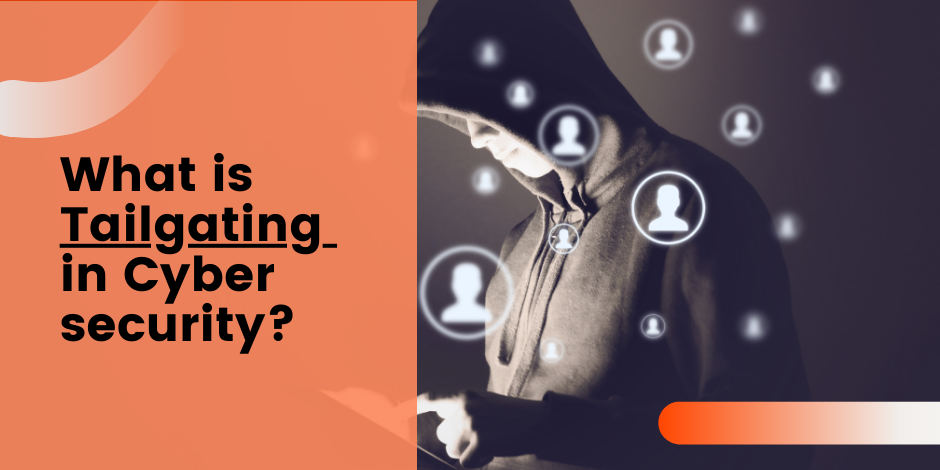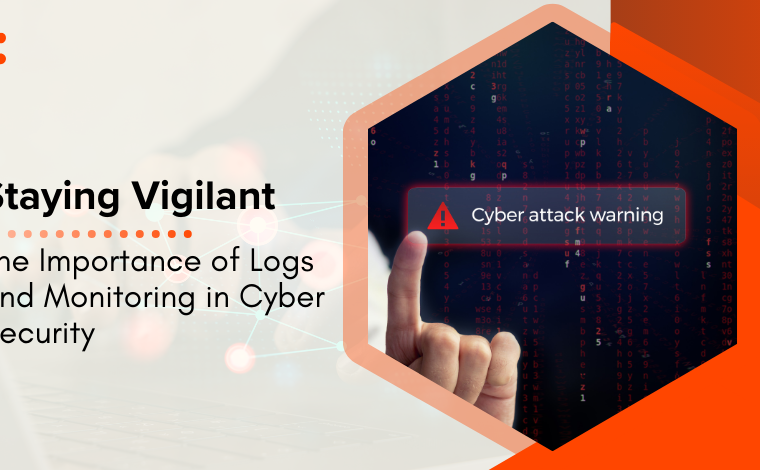What Is Tailgating in Cybersecurity?

Stay Informed With Our Weekly Newsletter
Receive crucial updates on the ever-evolving landscape of technology and innovation.
Tailgating is a significant concern in the field of cybersecurity. It refers to an unauthorized individual gaining access to secured premises or systems by following someone with legitimate access.
We explore tailgating in cybersecurity, its forms, potential consequences, preventive measures, and future trends.
Understanding the concept of tailgating in cybersecurity

When it comes to cybersecurity, tailgating refers to the act of physically or digitally following someone with authorized access into a restricted area or system.
The goal is to bypass security measures and gain entry without detection. This severely threatens the confidentiality, integrity, and availability of data and systems.
The basic definition of tailgating in cybersecurity
At its core, tailgating in cybersecurity involves an unauthorized person accompanying an authorized individual through secure checkpoints or entrances.
This can occur in various environments, such as office buildings, data centers, or server rooms. The unauthorized person takes advantage of the legitimate individual’s access rights, exploiting their trust and willingness to grant them entry.
In office buildings, tailgating can be a common occurrence. Employees often open the door for colleagues or visitors without verifying their identity or authorization.
This act of kindness can inadvertently compromise the security of the entire organization. It only takes one moment of trust to allow a potential threat to enter and wreak havoc on the network.
Tailgating in cybersecurity can have severe consequences in data centers where sensitive information is stored.
These facilities are designed to have strict access controls to ensure that only authorized personnel can enter.
However, a single instance of tailgating can expose the entire infrastructure to unauthorized individuals. The potential for data breaches, theft, or sabotage becomes a significant concern.
Why tailgating in cybersecurity is a significant issue
The trust-based nature of tailgating makes it a concerning issue in cybersecurity. While organizations invest in robust security measures, an individual can compromise them simply by holding the door open for someone they do not recognize.
This breach can lead to data breaches, theft, or unauthorized access to sensitive information.
Imagine a scenario where an employee, rushing to get to a meeting, holds the door open for a stranger who claims to have forgotten their access card.
Unbeknownst to the employee, this stranger is a malicious actor who intends to gain unauthorized access to the company’s network.
With just a few seconds of tailgating, the attacker can infiltrate the system, potentially compromising critical data and causing significant damage.
To mitigate the risk of tailgating in cybersecurity, organizations must implement a multi-layered approach to security.
This includes technological solutions such as access control systems, surveillance cameras, biometric authentication, and comprehensive employee training and awareness programs.
Organizations can significantly reduce the likelihood of successful unauthorized entry by educating employees about the dangers of tailgating and emphasizing the importance of verifying identities.
In conclusion, tailgating in cybersecurity is a significant issue due to its ability to exploit trust and bypass security measures.
Organizations must prioritize tailgating prevention by implementing robust security measures and educating employees about the risks involved.
By doing so, they can better protect their data, systems, and overall cyber infrastructure from potential threats.
The different forms of tailgating in cybersecurity

Tailgating can manifest in various forms, depending on the context and medium the unauthorized person utilizes.
These forms can be broadly classified as physical tailgating and digital tailgating.
Physical tailgating in cybersecurity
In a physical tailgating scenario, an unauthorized person physically follows an authorized individual into a secured area or facility.
They exploit genuine persons’ access rights and navigate through checkpoints or swipe-card systems without proper authorization.
Imagine a bustling office building with multiple floors and restricted access areas. Employees diligently swipe their access cards to enter these secure zones, confident that only authorized personnel can gain entry.
However, physical tailgating poses a significant threat to this security measure. An unauthorized person, dressed inconspicuously and blending in with the crowd, spots an employee with legitimate access and tailgates them.
As the employee swipes their card, the tailgater swiftly follows, slipping through the door before it closes.
This way, the tailgater gains unauthorized access to confidential areas, potentially compromising sensitive information or physical assets.
Physical tailgating is wider than in office buildings.
It can also occur in other environments, such as data centers or research facilities, where access control is crucial.
The consequences of physical tailgating can be severe, ranging from data breaches to intellectual property theft.
Digital tailgating and its implications
Digital tailgating occurs when an unauthorized individual gains access to digital systems or accounts by following someone with legitimate access.
This form of tailgating often takes place through phishing or social engineering techniques. The unauthorized person tricks or manipulates the legitimate person into revealing sensitive information or granting access.
Imagine a scenario where an employee receives an email that appears to be from their company’s IT department.
The email states that there has been a security breach and urges the employee to click on a link to change their password immediately.
Unbeknownst to the employee, this email is a phishing attempt carefully crafted by a cybercriminal. The employee, concerned about the security of their account, clicks on the link and is redirected to a fake login page.
Believing it to be genuine, they enter their username and password, unknowingly granting the cybercriminal access to their account.
Once the cybercriminal gains access, they can navigate through the digital systems, potentially compromising sensitive data, installing malware, or launching attacks within the network.
Digital tailgating can have far-reaching implications for the individual whose account is compromised and the entire organization’s cybersecurity posture.
Individuals and organizations must remain vigilant against digital tailgating attempts.
Education and awareness about phishing techniques, strong password practices, and multi-factor authentication are essential in mitigating the risks associated with this form of tailgating.
The potential consequences of tailgating in cybersecurity
The consequences of tailgating extend beyond the immediate breach of security measures. They can impact personal data, privacy, corporate security, and integrity.
Risks to personal data and privacy
Tailgating puts personal data at risk as unauthorized individuals gain access to systems where sensitive information is stored.
This can result in identity theft, financial loss, or exposure to personal details.
Additionally, tailgating compromises privacy, as unauthorized individuals can monitor or misuse personal information.
Threats to corporate security and integrity
For organizations, tailgating poses a severe threat to security and integrity.
Unauthorized individuals can gain access to critical systems, compromising sensitive data and exposing proprietary information.
This impacts the organization’s reputation and can result in financial losses or legal consequences.
Preventive measures against tailgating in cybersecurity
Organizations should implement preventive measures that combine robust security protocols and employee education and awareness to mitigate the risk of tailgating.
Implementing robust security protocols
Organizations should invest in access control systems, such as key cards, biometric scanners, or security personnel, to prevent physical tailgating.
These measures ensure that only authorized individuals can enter restricted areas. Organizations should regularly review and update security protocols to address emerging threats and vulnerabilities.
The role of employee education and awareness
Employee education and awareness are crucial in preventing both physical and digital tailgating.
Employees should be trained to recognize and report suspicious individuals or activities.
They should also be educated about the risks associated with tailgating and how to protect sensitive information. Regular security awareness programs can reinforce best practices and increase employee vigilance.
Future trends in tailgating and cybersecurity

As technology advances, new tailgating in cybersecurity techniques emerge, necessitating innovative prevention and detection methods.
Emerging techniques of tailgating in cybersecurity
Criminals continue to devise new ways to bypass security measures and gain unauthorised access.
One example is wearable devices, such as smartwatches or augmented reality glasses, to deceive security systems.
Organizations must stay informed about these emerging techniques and adapt their security measures accordingly.
Innovations in tailgating prevention and detection
Cybersecurity constantly evolves, and researchers and industry experts continually develop innovative methods to combat tailgating.
This includes advancements in biometric authentication, artificial intelligence, and real-time monitoring systems.
These innovations enhance security measures and enable prompt detection and response to tailgating attempts.
Conclusion
Tailgating in cybersecurity poses a severe threat to the industry.
It can result in unauthorized access, data breaches, and compromise of personal or corporate information.
Organizations must invest in robust security protocols, educate employees, and stay vigilant regarding emerging techniques to mitigate this risk.
The field of cybersecurity must continually evolve to address the growing challenges posed by tailgating.
If you have an interest in the field of cybersecurity, you may want to check out the Cybersecurity program offered by the Institute of Data.
Alternatively, feel free to contact our local team for a complimentary consultation on our programs.




